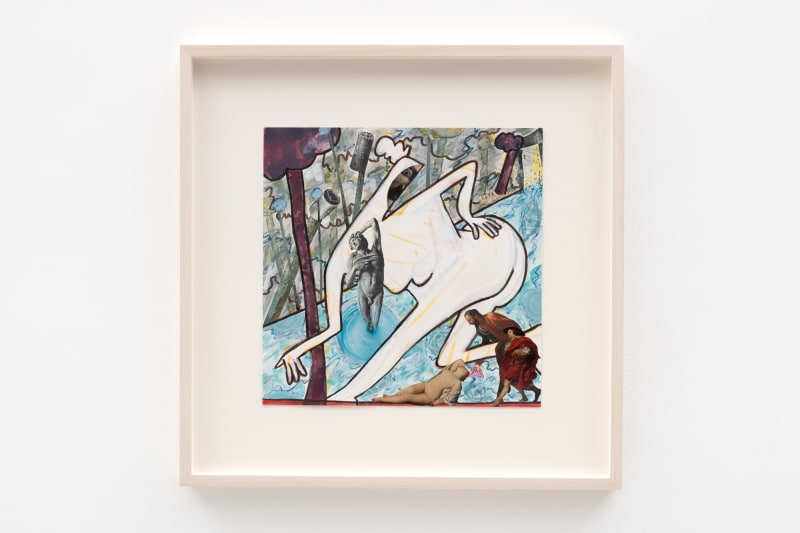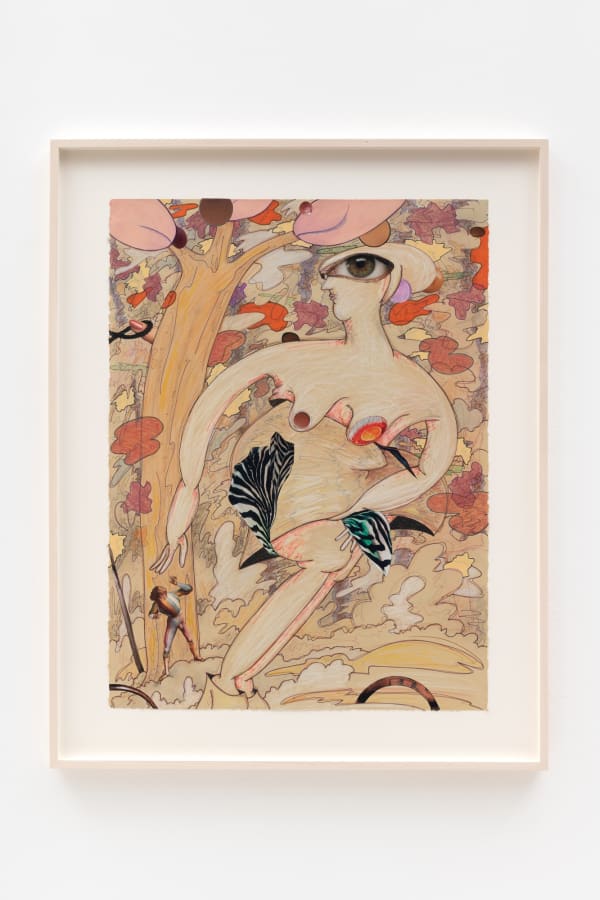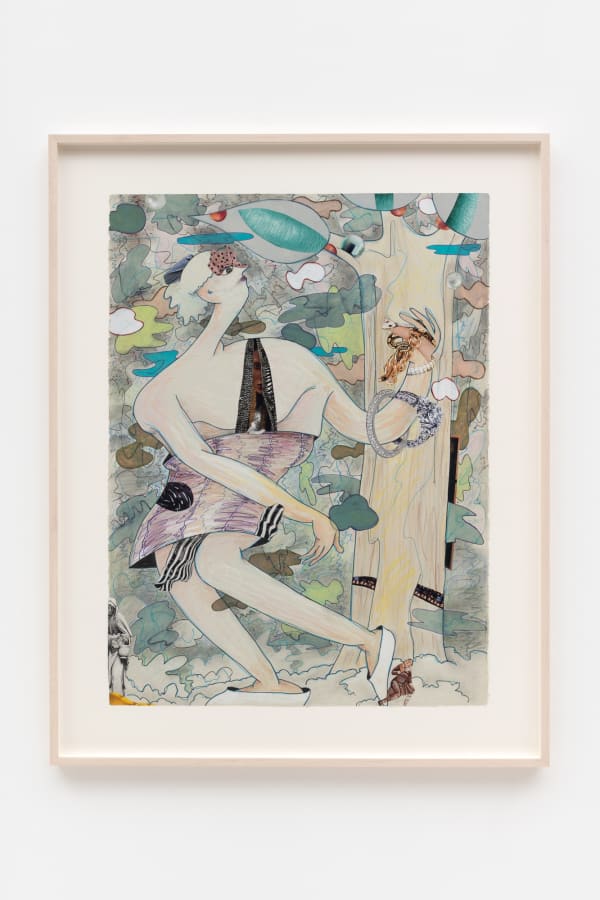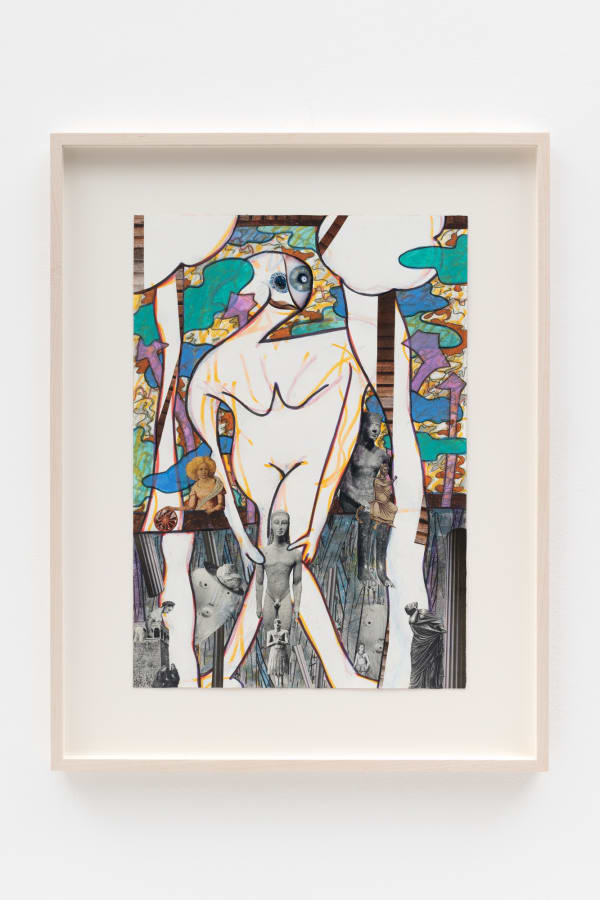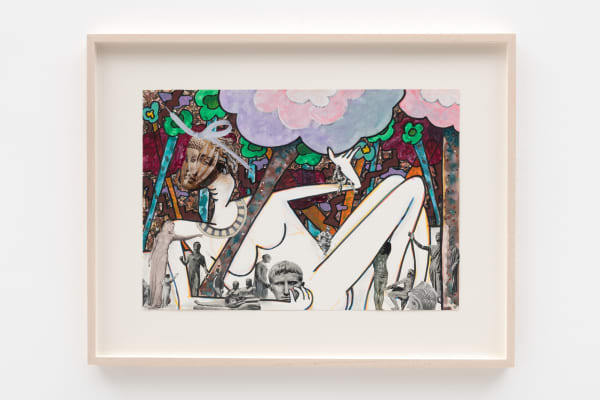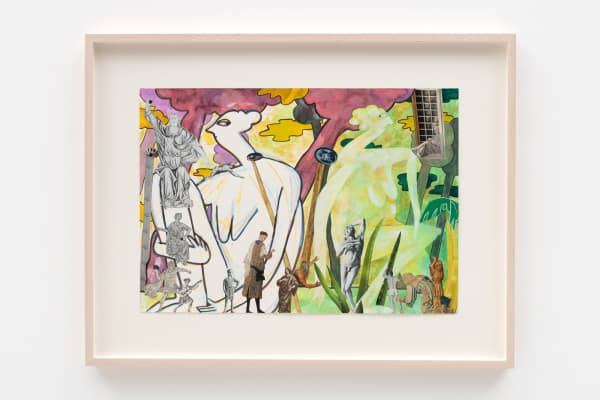Gladys Nilsson: Games
Hales is delighted to announce Games, a solo exhibition of works by revered artist Gladys Nilsson. Nilsson’s second exhibition with the gallery focuses on collages made from 2014 to the present day.
Nilsson (b.1940, Chicago, IL, USA) studied painting at the School of the Art Institute of Chicago, 1958-62. In 1973, the artist was among the first women to have a solo exhibition at the Whitney Museum of American Art. She lives and works in Chicago, Illinois.
Nilsson first came to prominence in 1966, as a member of a group of graduates from the School of the Art Institute of Chicago — including Jim Nutt, Suellen Rocca, Karl Wirsum, Art Green and Jim Falconer — who exhibited under the moniker ‘Hairy Who’ at Chicago’s Hyde Park Art Center. Despite only showing works together for three years between 1966 – 69, these exhibitions are now cited as the first defining moments of Chicago Imagism. More than a series of group shows, the exhibitions were progressive and challenged traditional modes of presentation. The Hairy Who left a long-lasting impression on the art world, reaching cult status, and are revered by many artists including Peter Doig, Jeff Koons and Kerry James Marshall.
Nilsson is best known for her meticulous and densely constructed compositions in which figures of varying size press up against the picture plane. A master of materials, she skilfully combines watercolour, gouache, pen and collaging techniques in powerful, gestural expressions of figuration. The exhibition, Games takes its title from a 2020 work, and both reflects Nilsson’s approach to her practice and life — remarking that if she is not enjoying herself, it is not worth doing.
Collage has long been a feature of Nilsson’s work, dating back to art school and the Hairy Who exhibitions of the 1960s, which included her early Plexiglass pieces and some of her Space Drawings series (1967). Her initial interest in collage was sparked even earlier, she remembers the joys of being a child and cutting up paper clothes for paper dollies. Nilsson notes the act of cutting rather than dressing the dolls was what she found the most appealing and wondered why she should ever stop. Having always poured over clothing catalogues and magazines in her teenage years, she always knew that elements would enter her work. It was then not until later in the 1990s that she fully reengaged with the collaging side of her practice, which has since remained a constant alongside water colour works. The earliest two pieces in the show, from the body of work A Source, mark the first time Nilsson combined watercolour with collage to make a cohesive story, gaining control over figures, placement and material. For the past couple of years collage has become the focus of her practice. Making the works featured in the exhibition has brought her much happiness, letting herself be soothed by the meditative act of finding the perfect piece and carefully snipping around them.
Each work begins with a figure, a woman – Nilsson’s persona, who is then placed in a situation. As Nilsson deftly comments, ‘happenstance happens.’[1] The women are constantly seeking, often journeying on an adventure in the outside world, and can be found traversing rivers, walking through forests, and clambering over buildings. The compositions are anchored by a single protagonist who is surrounded by smaller collaged figures and architectural elements. The drawn women of Nilsson’s collages are somewhat timeless, surrounded by a multitude of references in constant dialogue, from the mosaics of Pompeii, the architecture of a shopping mall to the bright lights of Las Vegas. Nilsson creates an alternate reality for her women to move through.
Source imagery for the collages comes from a variety of places, including countless art history tomes, often Nilsson collects discarded library books. Drawn to antiquity, the Renaissance, Etruscan and Egyptian sculpture, the same pieces of art will reoccur in the history books time and time again, transforming into repeating motifs in Nilsson’s work. She jokingly remarks that she cuts up famous works of art, only to discover them later in museums, after they have become characters in her work. Decades of subscribing to Vogue magazine, provides the colourful imagery. Nilsson will utilise cleansing advertisements for pools of water and large eyes from mascara advertisements. Drawn to textural difference across her practice, this extends to her collages in her use of glossy magazine paper contrasted with the dry flat paper of the old library books, tied together with mark making in pen, gouache, and watercolour.
In the process of making, Nilsson does not reach for categorized collage pieces instead she scans her sharp memory for the perfect character, often thinking of size first and body positioning. Look closely at a Nilsson collage and you will discover eyes that meet, arms outstretch and embrace, and heads peek from behind trees. In Long Wave, the artist pairs two statues at either end of the work that wave towards each other.
Playing with the rules of scale and proportion, nothing is out of bounds in Nilsson’s alternate reality. Teeming with tiny figures that add considerable weight to the composition, the works are full of narrative, dialogue and relationships. The joy of making and her humorous approach is evident in each piece.
[1] Gladys Nilsson, telephone call with the artist, 29.09.21
